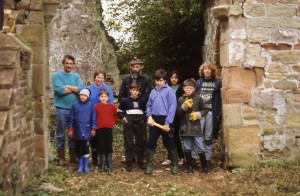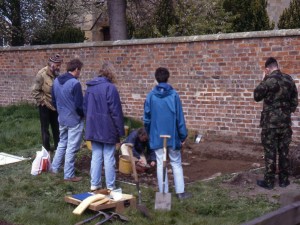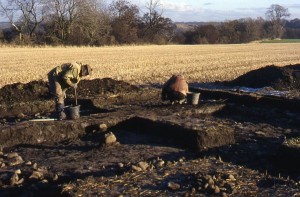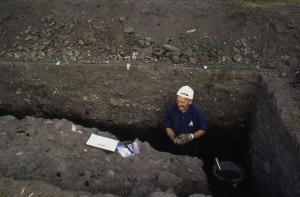Howard Carter

At a meeting of the Teesside Archaeological Society in the early 90’s, I first met Howard Carter, shortly after foolishly suggesting to the committee the idea of a TAS fieldwork group. Foolish in the sense that my suggestion with lightning speed, resulted in my instant co-opting(pressganging) onto the committee as fieldwork officer, which would soon ensnare me into a very polite pressganging into the role of secretary of the society.
Anyway I digress, as the newly empowered fieldwork officer I stood up at a lecture to call for volunteers.
One of the first people who approached me, and somebody who was a loyal supporter of the project until his death shortly after we completed the excavations at Dalton in 1997 was Howard Carter. With a name like Howard Carter how could he not be interested in archaeology. No he didn’t find the tomb of Tutankhamum,
Howard was a very private man, who was already retired when I met him, I know he worked for HM Customs during his career, but just like Ted Coles who I talked about recently, retirement seemed to be just work continuing along a different path. I am also not really familiar with the archaeological background of Howard, although if his commitment to our project was any example, he would have been a valuable asset on any site he worked on. In researching for this essay, it struck me that Howard had worked on every project I had organised.
Once you met Howard his trademark Tam o Shanter and long beard made him unforgettable. One of our first areas of interest for the fieldwork group was Sockburn which included a group activity to remove the trees and shrubs that were growing in the stone work of the church, slowly breaking it apart.
Another dig was at Newton under Roseberry adjacent to the church wall, and carried out as a result of our first use of the Martin Clark Resistivity meter donated to the group by Robin Daniels of Cleveland County Archaeology.
This was the Mk 1 resistivity meter meter designed for archaeology, requiring each reading to be manually recovered using manual potentiometer adjustment, in which took an age to do a couple of dozen readings. The meter was the result of work by Anthony Clark who wrote about and developed geophysical techniques long before ‘Geophysical’ or ‘Geofizz’ became cool buzzwords. His book ‘Seeing Beneath the Soil’ is still essential reading for those interested in geophysical survey.
The survey did show an exciting looking linear next to the churchyard wall, which on excavation initially looked like a parallel wall, unfortunately it turned out to be a ditch filled with stone acting as a soakaway for the boggy ground.

Howard was always there to offer advice and the occasional pithy comment, but it was at Dalton on Tees where like Ted Coles he showed his commitment to the archaeology, spending every weekend on site fair weather and foul, for the whole year we excavated there. Only towards the very end of the excavation did we lose Howard, who unknown to us had been in the final stages of terminal cancer for some time before succumbing, yet had continued digging near enough to the end.

Dalton on Tees 1997
One of Howard’s trademarks was a hand held auger from his Customs and Excise days which was used to sample the contents of sacks full of raw materials in traditional cargo ships in the pre container age. Howard was rarely without this useful tool, and it was kindly donated to me on his passing, something I was using as recently as last weekend.

